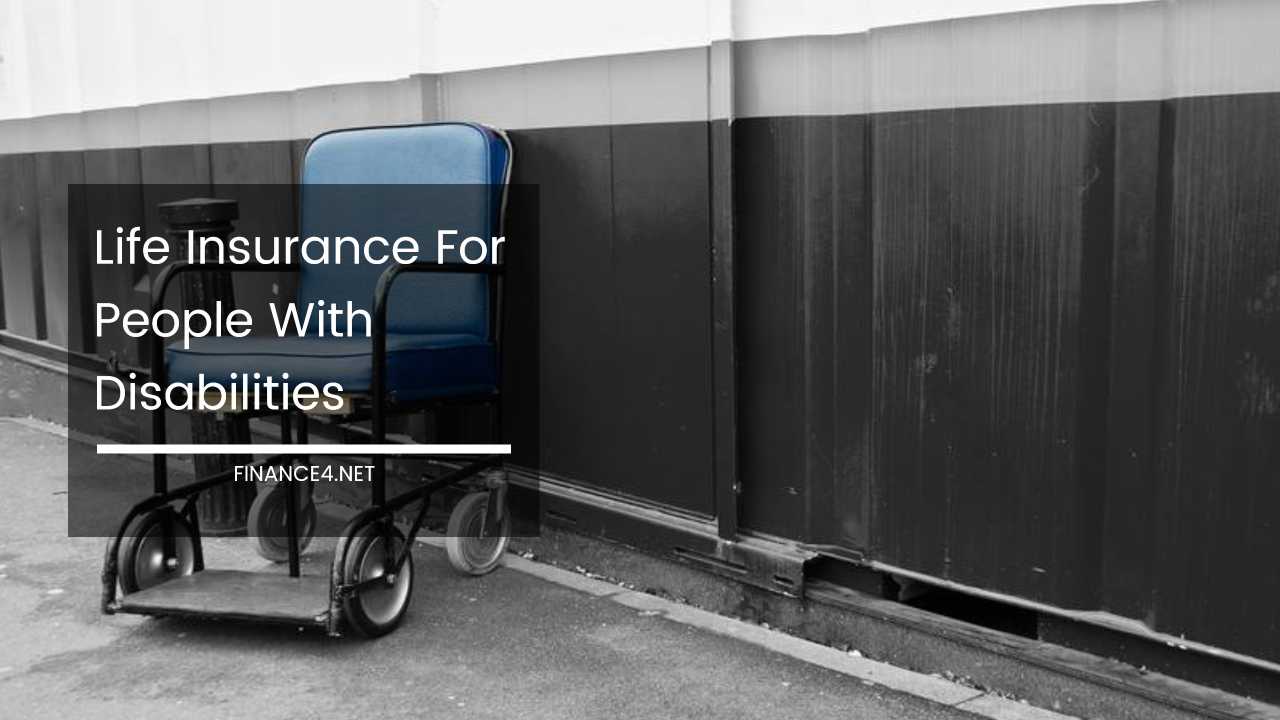Securing Life Insurance with a Disability: Challenges & Solutions

Life Insurance for People with Disabilities: Overcoming Challenges and Finding Solutions
Living with a disability presents a unique set of challenges, and financial planning is no exception. Life insurance, a cornerstone of financial security for many, can be particularly difficult to navigate for individuals with disabilities.
This guide delves deeper into the obstacles faced, explores potential solutions, and outlines important considerations for securing life insurance coverage.
Understanding the Correlation with Early Mortality
The primary hurdle for people with disabilities seeking life insurance is the potential correlation between their disability and a shortened lifespan.
Insurance companies are, by nature, risk-averse entities. They assess risk based on various factors, including health conditions. If a disability statistically increases the likelihood of early death, obtaining coverage can be difficult or expensive.
The severity of the impact varies depending on the specific disability. For example, someone with a visual impairment might face minimal obstacles compared to someone with a severe mobility impairment impacting life expectancy.
Navigating the Life Insurance Landscape
There are two main avenues to explore when seeking life insurance with a disability: government-sponsored programs and private insurance companies.
-
Government-Sponsored Options: Unfortunately, government programs like Medicaid offer limited life insurance options. Qualification requirements are typically stringent, with coverage amounts often insufficient to meet long-term financial needs. The ongoing debate about universal healthcare in the United States raises a potential future scenario where life insurance might also be offered universally, but this remains speculative at best.
-
Private Life Insurance Companies: Most people with disabilities will turn to private insurance companies. However, these companies employ a rigorous underwriting process that involves a thorough medical evaluation to assess the applicant’s health and potential lifespan. Pre-existing conditions, including disabilities, can significantly impact the underwriting decision. Factors like physical limitations, health complications associated with the disability, and lifestyle choices all come into play.
The Underwriting Process and Risk Assessment
Understanding the underwriting process is crucial. Insurers consider various factors:
- Life Expectancy: The key factor is the disability’s impact on lifespan. If the disability doesn’t statistically shorten life expectancy (e.g., deafness), the insurance company might treat the application like any non-disabled applicant.
- Health Conditions: Existing health issues, whether directly related to the disability or not, will be factored in. If a person with a spinal cord injury also struggles with chronic respiratory issues, this can negatively impact the decision.
- Habits and Lifestyle: Risky behaviors like smoking or substance abuse can negatively influence the decision. A person with a disability managing their health effectively might receive a more favorable review compared to someone with a disability who smokes or doesn’t manage their existing health conditions well.
For disabilities with no significant impact on lifespan, the underwriting process might be more favorable. In such cases, the premium might be comparable to what a non-disabled person would pay.
However, for disabilities with a clear correlation to reduced life expectancy, the insurance company has several options:
- Denial of Coverage: In extreme cases, the insurer might deny coverage altogether if the risk is deemed too high.
- Increased Premiums: This is the most common scenario. The insurer might offer coverage but at a significantly higher premium to reflect the increased risk.
- Limited Coverage Amounts: The insurer might offer coverage but with a lower death benefit payout compared to a standard policy.
The Americans with Disabilities Act (ADA) and its Limitations
The ADA prohibits discrimination based on disability. However, it’s important to understand the limitations. While insurance companies cannot deny coverage solely based on a disability, they can adjust premiums or deny applications based on the information gathered during the underwriting process, as long as the decision is based on a legitimate risk assessment.
Exploring Alternative Options: Life Insurance Without an Examination
A limited number of insurance companies offer life insurance policies without a medical exam. However, these policies often come with significant drawbacks:
- High Premiums: The lack of a medical assessment translates to a higher risk for the insurer, which translates to potentially exorbitant premiums that might outweigh the benefit of having coverage.
- Limited Coverage: These policies may offer lower death benefits or have other limitations compared to traditional life insurance. For example, they might have graded death benefits that pay out a lesser amount in the first few years of the policy.
If traditional routes are unsuccessful, exploring these options might be a last resort. It’s crucial to thoroughly research the company’s reputation and financial stability before committing. Your state’s insurance department can be a valuable resource for verifying an insurer’s legitimacy.
Strategies for Securing Life Insurance
Here are some suggestions to increase your chances of obtaining life insurance with a disability:
- Shop Around: Don’t limit yourself to a single insurer. Many companies specialize in high-risk life insurance and may offer more favorable terms for people with disabilities. Compare rates and coverage options from multiple companies to find the best deal for your situation.
-
Focus on Your Overall Health: Maintaining a healthy lifestyle can positively impact the underwriting process. This includes managing existing health conditions, eating a balanced diet, exercising regularly, and getting enough sleep. If you have a disability that requires ongoing medical care, ensure it’s well-managed and documented.
-
Work with an Insurance Agent: A knowledgeable agent specializing in high-risk life insurance can be a valuable asset. They can guide you through the application process, explain different policy options, and advocate on your behalf to insurance companies. Look for an agent who has experience working with clients with disabilities.
-
Be Transparent: Provide complete and accurate information during the application process. Hiding information can jeopardize your chances of obtaining coverage and could even lead to a policy being voided if discovered later.
-
Consider Group Life Insurance: If you are employed, inquire about your employer’s group life insurance plan. These plans often have simplified underwriting processes and may be easier to obtain coverage for, regardless of pre-existing conditions.
-
Explore Additional Options: Depending on your specific needs and circumstances, there might be alternative solutions to consider. Here are a few examples:
- Disability Income Insurance: This type of insurance provides financial support if you become disabled and are unable to work. It can be a valuable tool to replace lost income and help meet financial obligations.
- Charitable Trusts: If you have significant assets, you might consider establishing a special needs trust to benefit a loved one with a disability. This can help ensure their financial security without jeopardizing their eligibility for government assistance programs.
- Government Benefits: Several government programs offer financial assistance to individuals with disabilities. Explore programs like Supplemental Security Income (SSI) and Social Security Disability Insurance (SSDI) to see if you qualify.
Final Thoughts
Life insurance can be a valuable tool for people with disabilities, providing financial security for loved ones and ensuring their continued well-being in your absence.
Although challenges exist, understanding the landscape, exploring different options, and employing effective strategies can increase your chances of obtaining the coverage you need.
Remember, the key is to be proactive, informed, and persistent in your search. Don’t be discouraged by initial setbacks.
With careful planning and the right resources, you can secure the life insurance coverage you need to provide peace of mind for yourself and your loved ones.



